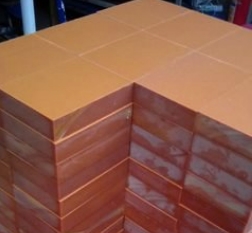- 30
- Mar
For some questions and answers about epoxy glass fiber cloth laminate, you will know more after reading
For some questions and answers about epoxy glass fiber cloth laminate, you will know more after reading
Epoxy glass fiber cloth laminate is the base material of printed circuit boards. The material is glass fiber, and the main component is SiO2. The glass fiber is woven into a cloth and coated with epoxy resin, which is a very complicated process.

1. Use it to have a certain degree of plasticity and toughness as the shell of some equipment or machinery, such as cars, yachts, etc.
2, the substrate of the circuit board.
1. What are the specifications of epoxy glass cloth board and what is epoxy board?
The epoxy glass cloth board is yellow, the material is epoxy resin, and the epoxy glass fiber board is made of glass fiber, which is generally water green. Its temperature resistance is higher than that of the epoxy glass cloth board, and its insulation in all aspects is also better. On epoxy glass cloth
2. What is the difference between epoxy resin board and epoxy glass cloth board?
According to popular saying, the two are actually the same, but the epoxy resin board omitted the reinforcing material.
There is a difference between the two. There are many kinds of reinforcing materials for epoxy resin board, the common one is glass cloth, as well as glass mat, glass fiber, mica, etc., and they have different uses.
Epoxy fiberglass board is also called reinforced fiberglass board. It is suitable for mechanical, electrical and electronic components with high insulation. It has high mechanical and dielectric properties, good heat resistance and moisture resistance.
Nó có các đặc điểm sau:
1. Các hình thức khác nhau
Various resins, curing agents, and modifier systems can almost adapt to the requirements of various applications on the form, and the range can be from extremely low viscosity to high melting point solids.
2. Bảo dưỡng thuận tiện
Choose a variety of different curing agents, the epoxy resin system can almost be cured in the temperature range of 0~180℃.
3, độ bám dính mạnh mẽ
Sự tồn tại của liên kết hydroxyl và ete phân cực vốn có trong chuỗi phân tử của nhựa epoxy làm cho nó có độ bám dính cao với các chất khác nhau. Độ co ngót của nhựa epoxy thấp khi đóng rắn và ứng suất bên trong tạo ra nhỏ, điều này cũng giúp cải thiện cường độ bám dính.
4, low shrinkage
“Phản ứng của nhựa epoxy và chất đóng rắn được sử dụng được thực hiện bằng phản ứng cộng trực tiếp hoặc phản ứng trùng hợp mở vòng của các nhóm epoxy trong phân tử nhựa và không có nước hoặc các sản phẩm phụ dễ bay hơi khác được giải phóng. So với nhựa polyester không bão hòa và nhựa phenolic, chúng cho thấy độ co ngót rất thấp (dưới 2%) trong quá trình đóng rắn.
5. Tính chất cơ học
Hệ thống nhựa epoxy đóng rắn có các đặc tính cơ học tuyệt vời.
